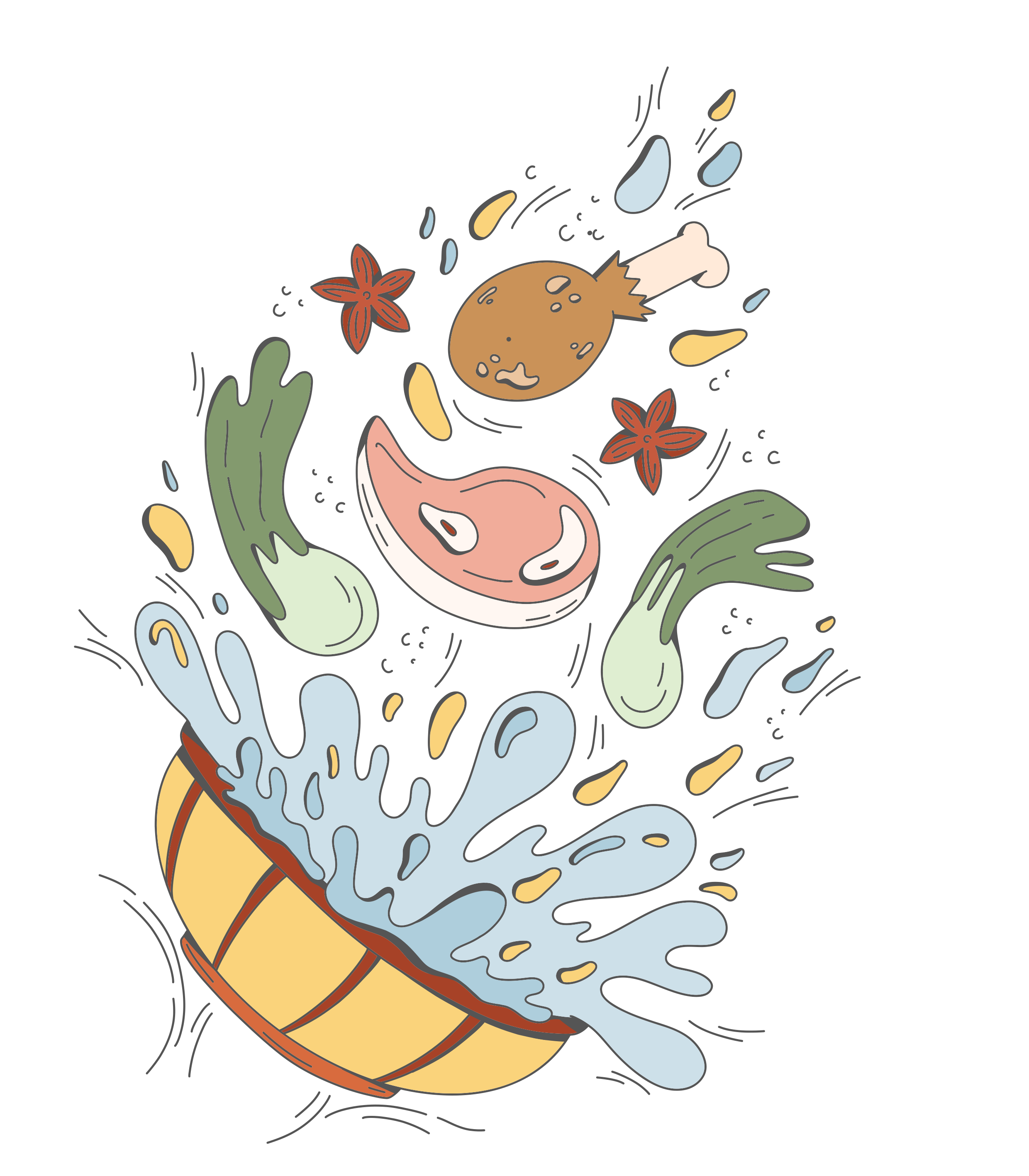Illustration by Bridget Daulby
Broths were traditionally made from animal carcasses and bones. An ancient Scottish tradition, called “passing the knuckle” involved villagers putting a beef knuckle bone in water on the wood burner overnight.
The bone would stew overnight in the water and in the morning the villager would take it out and give it to their neighbour. This would go on night after night, and after a couple of weeks, nothing of the knuckle would be left – all the minerals needed to make bone, collagens and other complex proteins being left in the water that the villagers would consume by using it in cooked oats and soups.
Broths weren’t just a Scottish fad. Around the world people had observed the health benefits of consuming broths: think “Jewish penicillin” or “chicken soup for the soul”.
There’s even a South African proverb that says “good broth will resurrect the dead.” That might be going a little too far, but when you look at the nutritional science behind broths there’s a lot to like.
We actually remodel our bones on a daily level, breaking down and reforming them in a process that lasts 4-8 months. Providing the nutrients required for this process is key to healthy bone synthesis.
Broths contain the minerals needed to lay down bone: obviously calcium, but also magnesium and trace minerals like boron that are required as cofactors for the formation of new bone.
Broth also provides unique molecules called glycoaminoglycans, which are a major component of our extracellular matrix (they make up our tissue structures).
These molecules are incredibly important for maintaining and rebuilding the structure of our gut. When we consume them, they help heal the membrane in the digestive system, supporting gut inflammation and gut health.
Broth also contains collagen. The term collagen comes from the Greek word for “glue” and in a broad sense, collagen is the “glue” of our body. Making up about a quarter of our total body mass, it’s a strong, springy, fibrous substance that is woven into our tissue – especially where mechanical function is essential, such as skin, cartilage, tendons and bones.
When we consume collagen-rich food, the proteins break down into amino acids (glycine, proline, hydroxyproline, hydroxylysine, and arginine) and form the “glue” our body needs to support rebuilding our skin, cartilage, tendons and bones.
Cuisines around the world – from French to Chinese – have relied on broths to add flavour to meals. In the home kitchen now, stock is easy to consume.
It can be used as a base for soups: one of my favourite quick lunches is a broth-based soup with bean noodles and shiitake mushrooms with any spare veggies thrown in. Or they can be simply consumed in a cup as a hot drink.
If you don’t like broth, you can still get some of the benefits by consuming a collagen product. Look for a product that has a low molecular weight, as research shows the smaller the collagen molecule the better the absorption.
Keep in mind too that research also shows that many of the benefits with collagen kick in when we consume 10 grams or more a day. But if you’re open to it, I’d definitely recommend adding broths to your nutritional repertoire!





